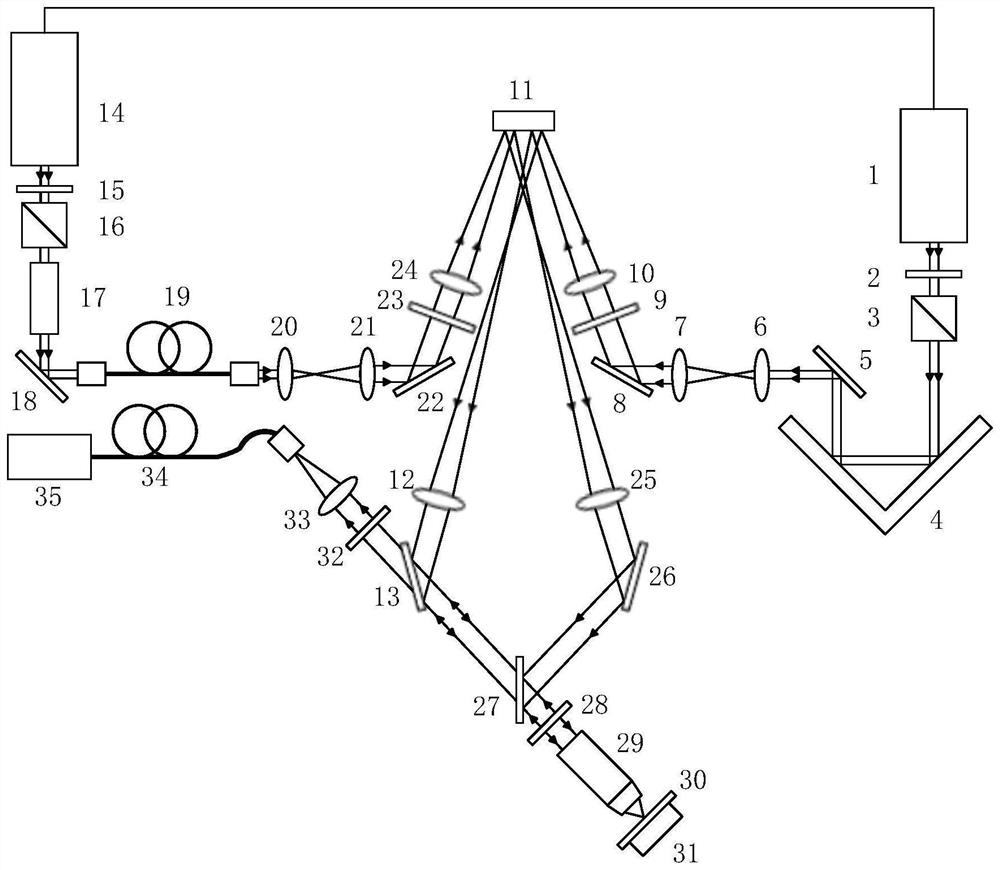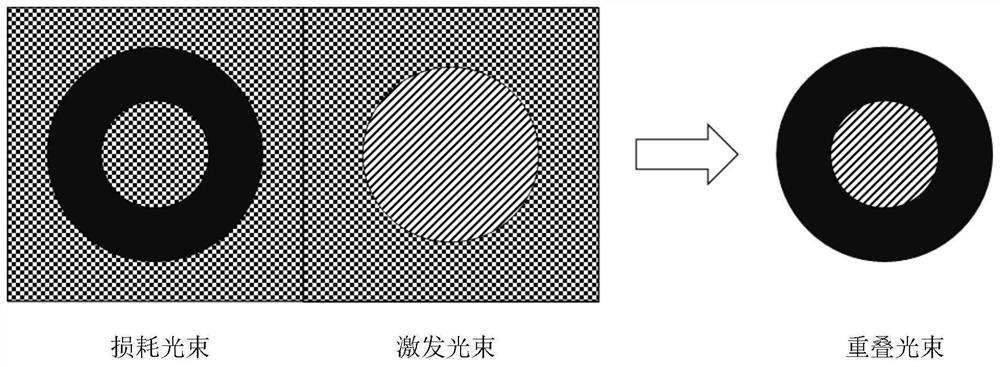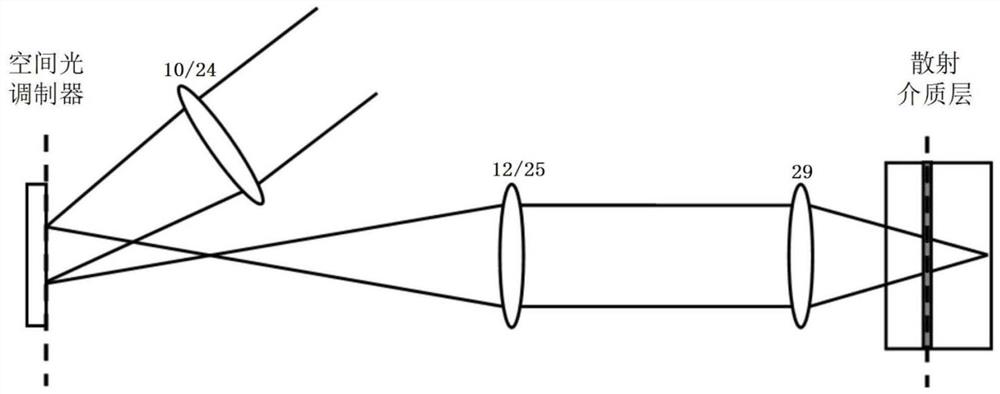Adaptive optical aberration correction system and method in STED super-resolution technology
A technology of adaptive optics and super-resolution technology, which is applied in the field of adaptive optics aberration correction system, can solve the problems of increasing system cost and complexity, and achieve the effects of rapid simultaneous imaging quality optimization, improvement of focus quality, and cost reduction
- Summary
- Abstract
- Description
- Claims
- Application Information
AI Technical Summary
Problems solved by technology
Method used
Image
Examples
Embodiment 1
[0048] (1) Place an ordinary glass slide on the stage 31, the excitation light source 1 sends a pulsed laser beam, the excitation beam is adjusted to linearly polarized light through the first half-wave plate 2, and the power is adjusted by the first polarization beam splitter prism 3, and the excitation beam passes through After the optical delay line 4, the outgoing light from the first reflector 5 passes through the converging lens 6 of the first beam expander module and the collimating lens 7 of the first beam expander module to expand the beam, and then is reflected by the second reflector 8 and passes through the second half-wave The polarization state is adjusted by the sheet 9, and the incident beam is converged by the first converging lens 10 into the right half area of the spatial light modulator 11 that is not loaded with the modulation phase. 13 reflection, and then transmitted through the second dichroic mirror 27, then adjusted to the circular polarization state...
Embodiment 2
[0060] (1) The excitation light source 1 sends a pulsed laser beam, the excitation beam is adjusted to linearly polarized light through the first half-wave plate 2, the first polarizing beam splitter prism 3 adjusts the power, and the excitation beam passes through the optical delay line 4 from the first reflection mirror 5 The outgoing light is expanded by the converging lens 6 and the collimating lens 7, and then reflected by the second reflector 8 and adjusted by the second half-wave plate 9 to adjust the polarization state. In the right half area of the modulator 11, the emitted light beam is collimated by the first collimator lens 12, reflected from the first dichroic mirror 13, transmitted through the second dichroic mirror 27, and then passed through the quarter-wave plate 28 is adjusted to the circular polarization state by the microscope objective lens 29 and converged onto the scattering sample 30 in the stage 31, and the light signal returned from the slide glass p...
Embodiment 3
[0072] (1) Place an ordinary glass slide on the stage 31, the excitation light source 1 sends a pulsed laser beam, and the excitation beam is adjusted to linearly polarized light and adjusts the power through the first half-wave plate 2 and the first polarization beam splitter prism 3, and the excitation beam After passing through the optical delay line 4, the outgoing light from the first reflecting mirror 5 is expanded through the converging lens 6 and the collimating lens 7, and then reflected by the second reflecting mirror 8, and the polarization state is adjusted by the second half-wave plate 9. The converging lens 10 converges the incident light into the right half area of the spatial light modulator 11 that is not loaded with the modulated phase, and the outgoing light beam is collimated by the first collimating lens 12 and then reflected from the first dichroic mirror 13, and then passes through the second dichroic The chromatic mirror 27 transmits, then adjusts to t...
PUM
 Login to View More
Login to View More Abstract
Description
Claims
Application Information
 Login to View More
Login to View More - R&D
- Intellectual Property
- Life Sciences
- Materials
- Tech Scout
- Unparalleled Data Quality
- Higher Quality Content
- 60% Fewer Hallucinations
Browse by: Latest US Patents, China's latest patents, Technical Efficacy Thesaurus, Application Domain, Technology Topic, Popular Technical Reports.
© 2025 PatSnap. All rights reserved.Legal|Privacy policy|Modern Slavery Act Transparency Statement|Sitemap|About US| Contact US: help@patsnap.com



